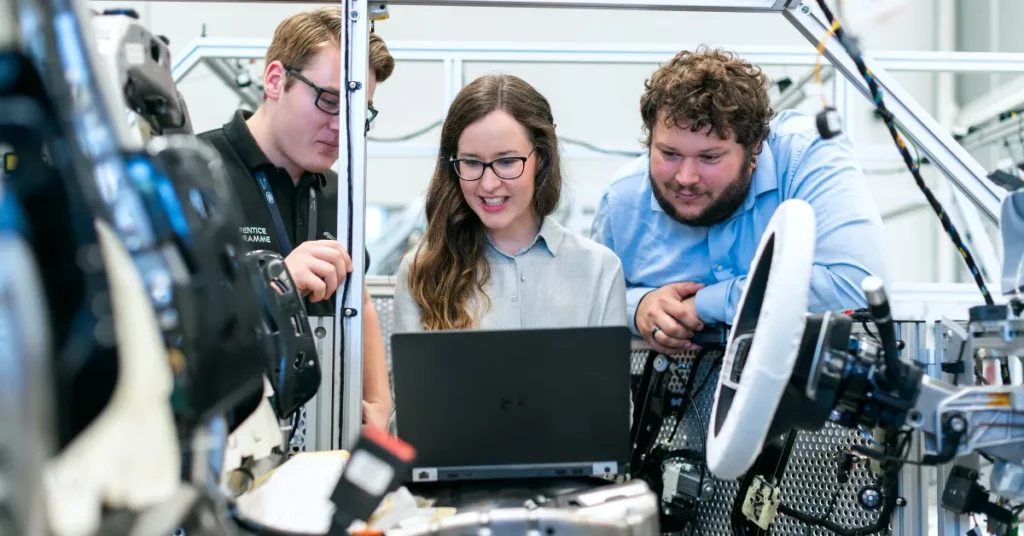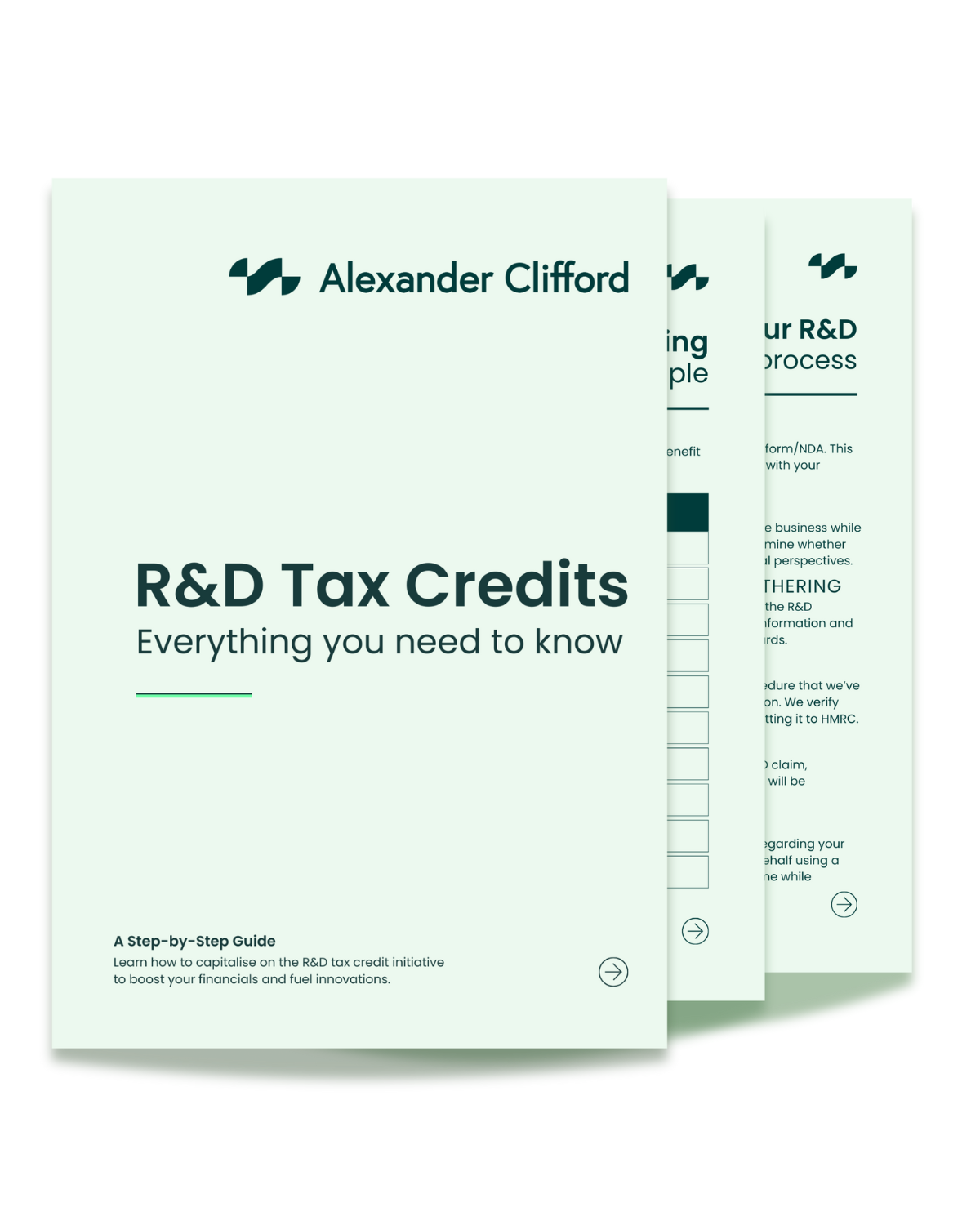Engineering R&D Qualifies for Tax Relief

Engineering has played a major part in bringing creative ideas to life, but how can your business ensure that research and development in engineering can qualify for UK R&D tax relief? We explore the role of engineering in innovation – from the benefits to the challenges – to showcase how engineering R&D qualifies for tax relief.
As many businesses focus on the advancements that engineers contribute to, engineering firms are frequently pushing the boundaries of their field in order to make progress possible. But investing in engineering R&D can become costly – especially for smaller businesses.
This is where HMRC can play a major role in advancement. In 2025, the British government is doubling down on their enthusiasm for R&D tax relief, aiming to provide financial relief for scientific and technological innovation.
If you’re an engineering firm investing in research and development that aims to advance science or technology, you may be eligible for this relief that’s designed to offset some of your research and development costs. So if you’re ready to save money, keep reading for all the relevant information on R&D tax credits for engineering innovation.
The Role of Engineering in Innovation
By aiming to solve complex, modern problems, engineering is placed at the heart of innovation. As such, engineering helps to shape industries while improving the way we live and work. With engineers playing a significant role in solving complex challenges, advancements in automation, AI and material science would not be possible.
This means that businesses investing in engineering innovation are not only improving their own operations, but they’re greatly impacting other industries.
By prioritising research and development, engineering firms can ensure that they’re at the forefront of their field, while continuing to drive meaningful change. Because those who embrace innovation shape the future of technology while strengthening their position in competitive markets.
Innovative Industries Relying on Engineering
The demand for new and improved solutions to some of the world’s most challenging problems spans across multiple industries. While some rely solely on science, most innovative industries rely on engineering to help solve problems. Some of these industries include:
- Healthcare
The development of effective surgical tools, implanted medical devices and even gene therapies require specialised engineers - Space exploration
Engineering plays a major part in space exploration by developing effective spacecraft, and advancing fuel efficiency - Software development
Developing software such as AI and cybersecurity requires a range of skilled engineering - Renewable energy
Sustainable energy innovation in areas like solar power, carbon capture and wind power relies on various types of engineering
The fact that engineers have this much involvement in innovation, goes to show how important it is to invest in engineering R&D.
Benefits of Investing in Engineering R&D
Given the broad reach of engineering, there’s an enormous amount of benefits for those investing in research and development in the field. Some of the benefits of investing in engineering R&D are:
- Advances technological innovations
Investing in engineering R&D can lead to the development of cutting edge technology that helps improve efficiency, sustainability and performance - Improves competitiveness
Engineering firms that actively invest in research and development gain a market advantage which can result in an uptake in new clients - Strengthens workforce skills and expertise
As research and development improves the knowledge base, engineers and technical staff are encouraged to upskill in order to adapt to new advancements, this culture of personal development can help attract top talent - Expands business opportunities
Innovative engineering firms that invest in R&D are more likely to contribute to additional research and development through collaborations or contracts with government bodies, research organisations or even major companies - Improves efficiency and cost effectiveness
Advancements made in engineering through research and development can help reduce production costs, increase output and improve operational efficiency
By prioritising advancements in engineering, businesses and engineering firms alike can drive progress and improve operations, contributing to long term success.

Challenges Faced in Engineering R&D
While the list of benefits may be long, engineering R&D isn’t without its challenges. The following outlines some of the more common challenges faced by engineering research and development projects:
- Technical complexity and uncertainty
Research and development does not guarantee success, meaning there is a fair amount of risk involved in engineering R&D - Regulatory and compliance adherence
Many engineering innovations are required to meet a range of strict industry regulations - Supply chain disruptions
A lot of engineering research and development relies on specialist materials, equipment and components – all of which can be impacted by global supply chains - High costs and budgetary constraints
Given time constraints and the cost of required materials, research and development can often become pretty expensive, meaning it often requires additional financing
How Engineering R&D Qualifies for Tax Relief
R&D tax relief is an incentive formed by the British government that supports scientific and technological research and development. The idea behind it is to enhance the knowledge and capabilities of science and technology, contributing to a hub of innovation within the UK. So how can your engineering R&D qualify?
Well, most engineering research and development is deemed as technological, but there are two key criteria that guarantee eligibility for the relief. Firstly, your business must be based in the UK. Secondly, your project must aim to overcome a technical uncertainty that a competent professional in the field could not solve.
In addition to this, your project should aim to produce a new or improved product, service, process or software that advances your field – which in this case, is engineering!
Qualifying Activities for Engineering R&D Tax Relief
After confirming that your project is eligible for R&D tax relief, you must identify the qualifying activities. According to HMRC, qualifying activities are:
“activities directly aimed at resolving scientific or technological uncertainties”
Quote from HMRC, How to identify qualifying R&D activities
The following are some examples of qualifying activities in engineering R&D:
- Assessing project viability
- Enhancing automation and control systems
- Overcoming integration challenges
- Designing and developing prototypes
Eligible R&D Tax Credit Costs
After identifying all of the qualifying activities throughout your project, you can identify the eligible expenditure. It’s important to note that you can only claim costs incurred during eligible activities. Some of the qualifying costs include:
- Direct staff costs (such as PAYE, NIC and pension contributions)
- Externally provided worker (EPW) costs
- Consumable item costs (includes materials and some utilities)
- Software costs (for software used in R&D)
- Prototype costs (includes designing, creating and testing)
Claim R&D Tax Relief With Alexander Clifford
R&D tax credits can be a valuable source of funding for your business, but navigating the claims process can be complex. That’s where Alexander Clifford comes in.
Our expert team takes the hassle out of claiming, ensuring you receive the maximum benefit while maintaining compliance with HMRC. With over 2,400 successful claims submitted on behalf of our clients, we know how to get results.
Ready to make savings with R&D tax credits? Get in touch with our specialist team by filling in the contact form below, or click here to book an appointment at a time that suits you.
Book a quick call







